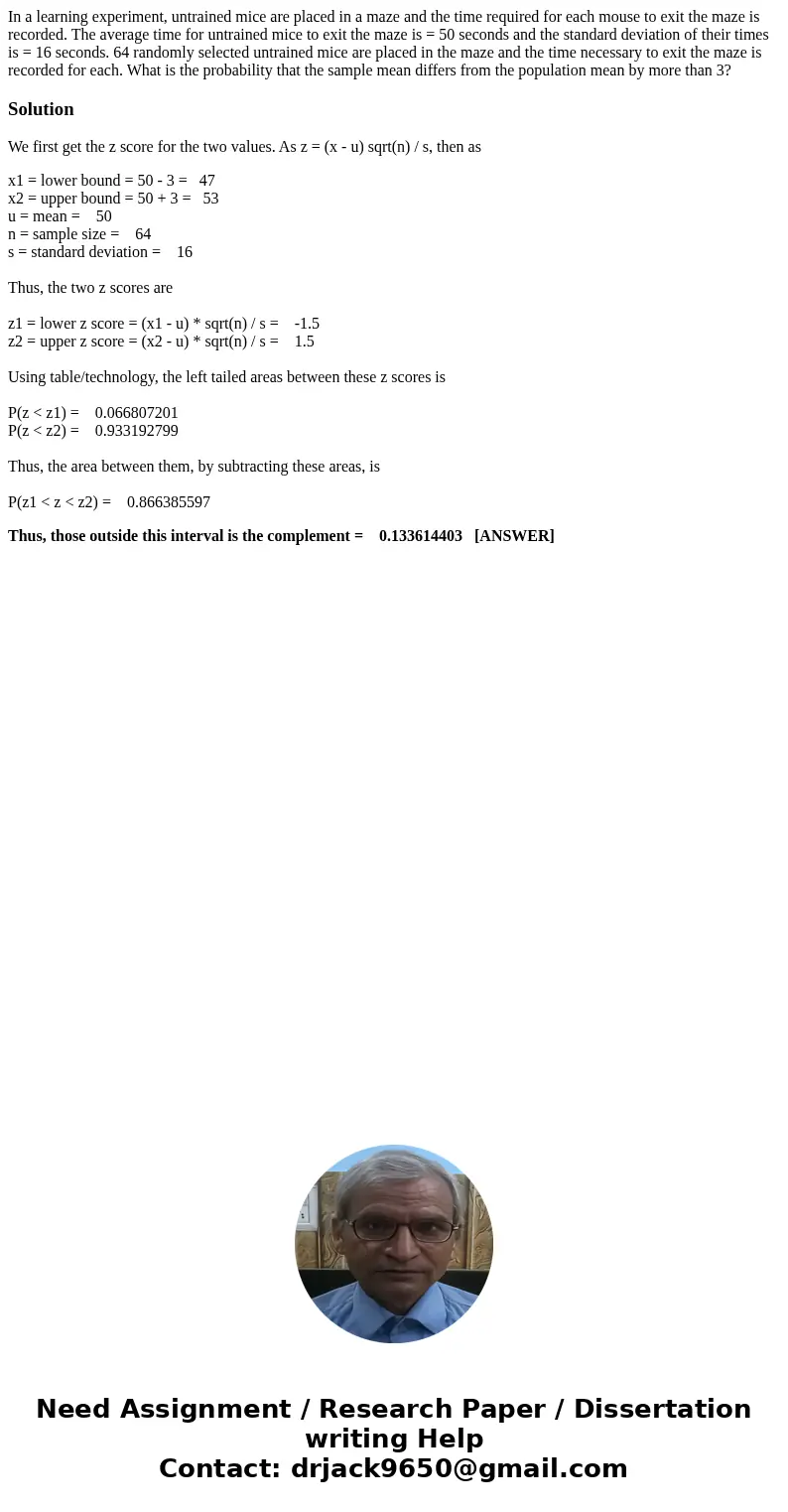In a learning experiment untrained mice are placed in a maze
In a learning experiment, untrained mice are placed in a maze and the time required for each mouse to exit the maze is recorded. The average time for untrained mice to exit the maze is = 50 seconds and the standard deviation of their times is = 16 seconds. 64 randomly selected untrained mice are placed in the maze and the time necessary to exit the maze is recorded for each. What is the probability that the sample mean differs from the population mean by more than 3?
Solution
We first get the z score for the two values. As z = (x - u) sqrt(n) / s, then as
x1 = lower bound = 50 - 3 = 47
x2 = upper bound = 50 + 3 = 53
u = mean = 50
n = sample size = 64
s = standard deviation = 16
Thus, the two z scores are
z1 = lower z score = (x1 - u) * sqrt(n) / s = -1.5
z2 = upper z score = (x2 - u) * sqrt(n) / s = 1.5
Using table/technology, the left tailed areas between these z scores is
P(z < z1) = 0.066807201
P(z < z2) = 0.933192799
Thus, the area between them, by subtracting these areas, is
P(z1 < z < z2) = 0.866385597
Thus, those outside this interval is the complement = 0.133614403 [ANSWER]

 Homework Sourse
Homework Sourse